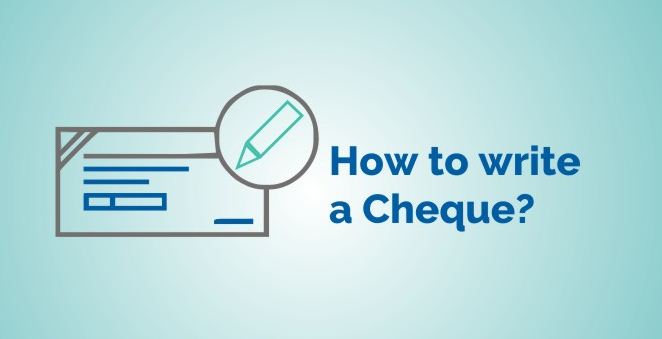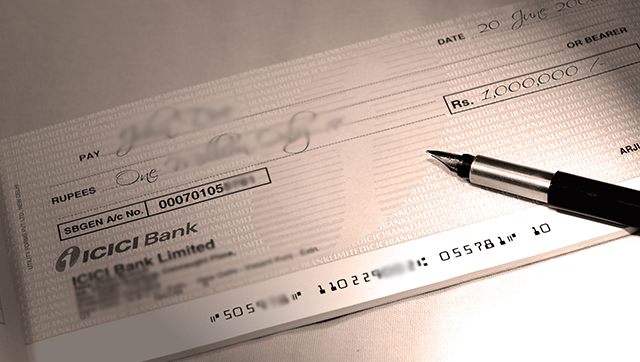Do you fill out a Cheque for the first time or some time in the first place? You may have questions about where to sign a Cheque and how to write a Cheque with cents. Even if you don’t write many Cheques, it’s still an important skill. How to quickly answer your questions.
Step 1: Cheque Date
Write the date on the line in the upper right corner. This step is important, so know when the bank and / or person you are offering the Cheque to have written it.
Step 2: To whom is this Cheque?
The next line of the Cheque, “pay for the queue” is the name of the person or company you want to pay. You can also write the word “money” if you don’t know the exact name of the person or company. Be aware that this can be dangerous if the Cheque is ever lost or stolen. Anyone who can cash or deposit a Cheque made as “cash”.
Also, Read – Top Things to Know More on Business Loan Calculator
Step 3: Write the payment amount in numbers
There are two points in a Cheque, where you write down the payment amount. First, you essential to write the amount of dollar (for example $ 130.45) in the small box on the right. Make sure to write this clearly so that the ATM and / or bank can deduct this amount from your account.
Step 4: Write the payment amount in words
In the line “Pay In Line”, write the dollar amount in words to match the dollar amount you wrote in the box. For example, if you pay 10 130.45, you write “one hundred thirty and 45/100”. To write a Cheque with cents, don’t forget to keep the cents amount to 100. If the dollar amount is a round number, add “and 00/100” for additional clarity. Writing the dollar amount in words is important for a bank to process a Cheque because it ensures the correct payment.
Step 5: Write a note
It is optional to fill in the line that says “memo,” but it is helpful to know why you wrote the Cheque. If you are paying a monthly electric bill or rent Cheque, you can write an “electric bill” or “monthly rent” in the memo area. Often when you pay the bill, the company will ask you to write your account number on the Cheque-in in the memo area.
Step 6: Sign the Cheque
Sign in with your name on the line in the lower right corner, using the signature you used when you opened the verification account. It shows that you are paying a certain amount and you agree to the correct payee.
How to Avoid Cheque Writing Mistakes?
Dumb Mistakes You Make When Writing Czech – Don’t Do It!
One of the most common ways to pay someone is through Cheques. The Cheque gives you the flexibility to pay someone for some late (post-dated Cheque) by writing now. Writing a Cheque may seem like such a simple task, but do you know that there are many weak links to writing Cheques, which can create a huge problem for you.
Must Read – SBI Gold Loan – Interest Rates, Schemes, Eligibility and Calculator
If you are not careful when writing a Cheque, it can be misused by someone else and cause you to lose track of it with unwanted headaches. Today’s generation is very responsible when writing Cheques. In this article, 2 things you should know and you should always practice Czech writing. These 2 points are a step-by-step recipe for writing Cheques. Let’s look at them one by one
Do not consent spaces among words or numbers
It’s a no brainer. When you write numbers and words in a Cheque, whether it’s a name or a sum, never leave a space or space between them, because it allows you to add some character or number and change the whole Cheque.
Imagine you are paying a Cheque for “ANKIT SHARMA”, but leave enough space between “ANKIT” and “SHARMA”, it looks like “ANKIT SHARMA”. One can add “A” after “ANKIT” and change the name to “ANKITA SHARMA”. However, if you leave a small space between “ANKIT” and “SHARMA”, it will be difficult to add another character in between.
Make sure you pass the Cheque by saying “A / C Payee”
If you are going to pay someone and you want to force the payment to go to the same person’s bank account, then, in that case, you have to double-Cheque the “A / C Payee” or “Account Payee”, which is credited to a bank account. Confirms and one over the counter as CASH Commissioning couplings.
Many people forget to do this, and if the Cheque is misplaced or lost, someone can pose as a target and take money out of the bank, hoping that you know how easy it is to steal someone’s identity and misuse documents.

Krishna Murthy is the senior publisher at Trickyfinance. Krishna Murthy was one of the brilliant students during his college days. He completed his education in MBA (Master of Business Administration), and he is currently managing the all workload for sharing the best banking information over the internet. The main purpose of starting Tricky Finance is to provide all the precious information related to businesses and the banks to his readers.





